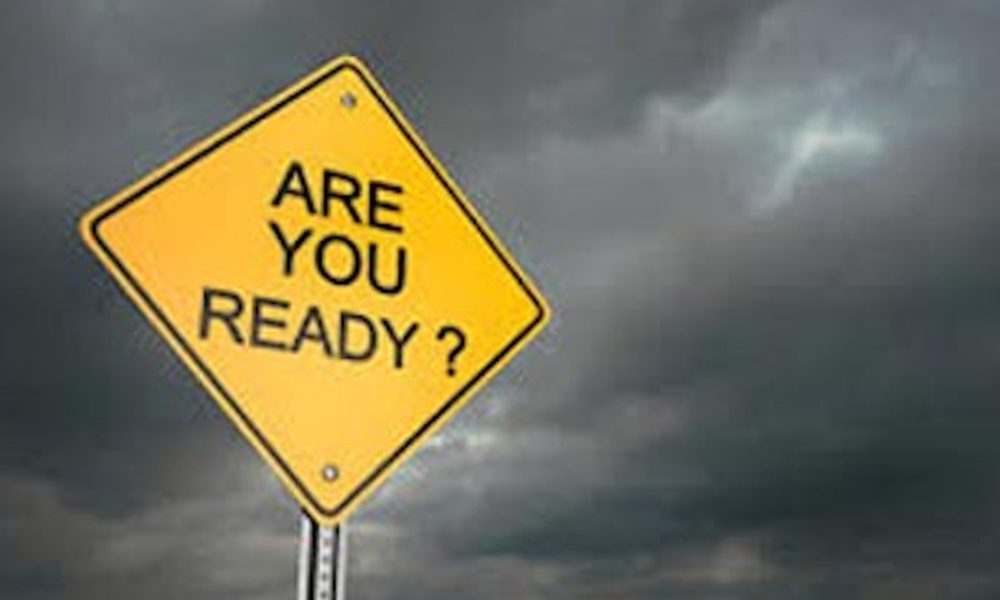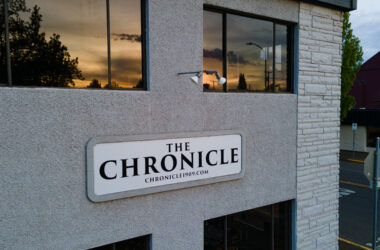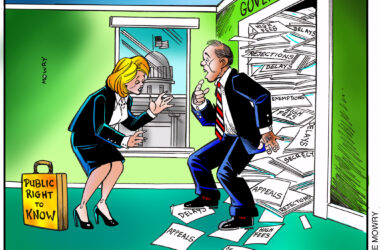
What would you do if the Cascadia earthquake were to hit our area? Or, how about another repeat of the 1962 Columbus Day storm?
As most of us have witnessed throughout our lifetime, Mother Nature can get nasty at any time, thus making all of us vulnerable to a natural disaster.
This Saturday, May 19 the City of Creswell will be hosting an Emergency Preparedness Fair, from 10 a.m. to 1 p.m. at the Cobalt Activity Center, 364 Cobalt Lane in Creswell.
As I look back over the course of my lifetime, I’ve witnessed historic floods, ice storms, earthquakes and even the eruption of Mt. St. Helens on May 18, 1980. All had some sort of significant impact on my life and the lives of people living in the region where the event took place.
I remember my parents talking about the Columbus Day storm that hit the Pacific Northwest in 1962, bringing 90 mile per hour winds to the Salem area where they grew up, and 160 to 170 mile per hour winds to the northern Oregon/southern Washington coasts. I remember my dad telling me how he purchased a chainsaw and went from neighborhood to neighborhood cutting up fallen trees for people while in high school.
During my lifetime, I remember the falling ash one Sunday morning on May 18, 1980, when falling ash blackened the sky and covered the ground in Salem following the Mt. St. Helens eruption. I remember watching the television coverage of the eruption and was amazed how it totally changed the landscape of the area, including significant flood and ash damage to neighboring communities. Years later I visited the Mt. St. Helens area and much of the surrounding area looked totally devastated, trees snapped in half and the landscape gray, covered by layers of ash.
In 1998, while living in Grays Harbor County, Washington I experienced a historic flood while serving as publisher of the Montesano Vidette.
Record rainfall fell over a two- to three-day period. There was so much rain, they had to open up the spillways of one of the dams in fear that the dam might break. This resulted in the closure of Hwy. 12. Montesano was basically an island, and living outside of town, I was unable to get the office that morning, which turned out to be our press day. So, my reporter and I had to go to the local community college to write our stories and fax them over to the newspaper, because the internet lines were down and there was no email service.
Later that afternoon, the flooding of the river had subsided and we were able to make it to the newspaper office.
Back in those days the newspapers were pasted-up on layout sheets. I had to get the newspaper pages from Montesano to Shelton, Wash. to be printed. With a number of roads still closed to flooding, I had to meander through a number of logging roads, which were higher in elevation to get to Shelton, which took about four hours. By the time I got back to Montesano, it was the wee hours of the morning. I had to do all the labeling and bagging of the newspapers myself in order to get the papers to the post office for mailing that morning.
A couple days later, the Governor of Washington came to Montesano and toured the devastation the floods had caused. Much of the damage was done to homes, which were flooded by the river, and the death of livestock that were trapped in the low-lying fields.
A couple years later, on July 2, 1999 Grays Harbor experienced a 5.8 magnitude earthquake. This was my first experience feeling an earthquake, which was centered in nearby Satsup in Grays Harbor County.
My wife and I had just purchased a new home in Montesano and I was showing my kids their new home when the earthquake hit. I remember looking out the front window and horses were galloping around the pasture across the street, and the power lines were bouncing up and down as the rolling sensation continued for a little more than a minute.
The most damage from the earthquake was done to the historic Grays Harbor County Courthouse, which was built in the early 1900s. There was substantial amount of damage done to the courthouse, which took about a year to repair.
So, you never know when the next catastrophic event might occur. They say that the Pacific Northwest is due for a major earthquake, with the last Cascadia earthquake happening on Jan. 26, 1700.
What will happen if a 9.0 earthquake hits our area? What will happen if we have a repeat of the 1962 Columbus Day storm?
There are a lot of questions about what to do if disaster strikes our area. Saturday’s Emergency Preparedness will provide many answers to the questions we may have. It will also show us what steps need to be taken now in preparation for when the next disaster strikes.
I hope to see you this Saturday at the Creswell Emergency Preparedness Fair!







